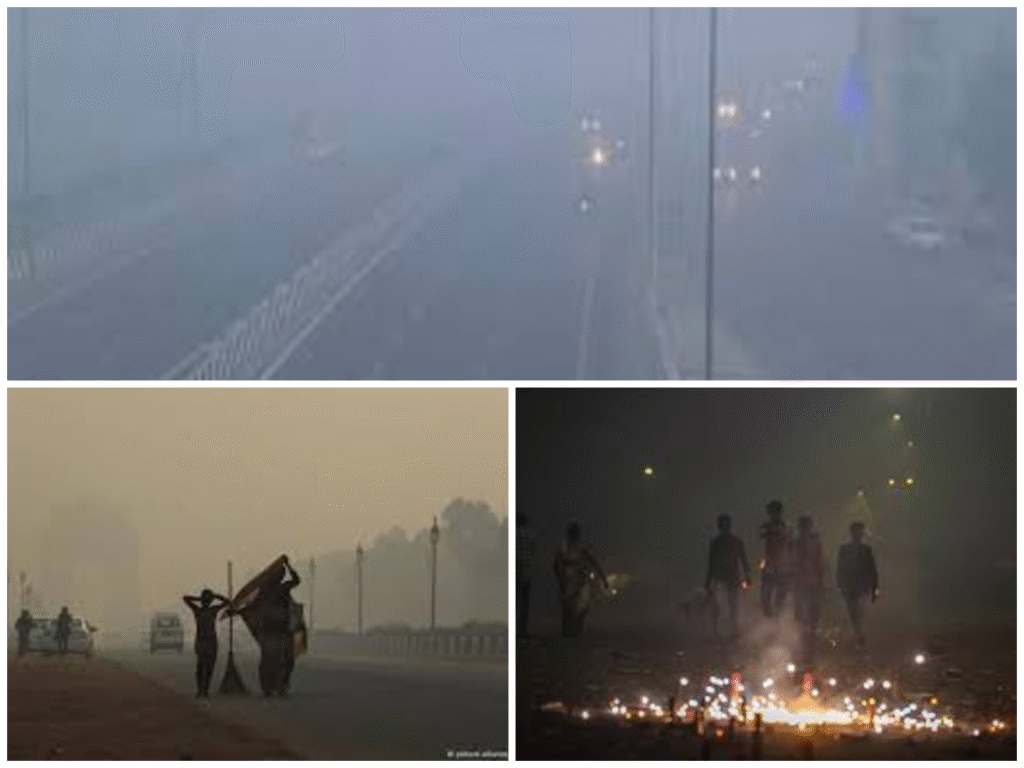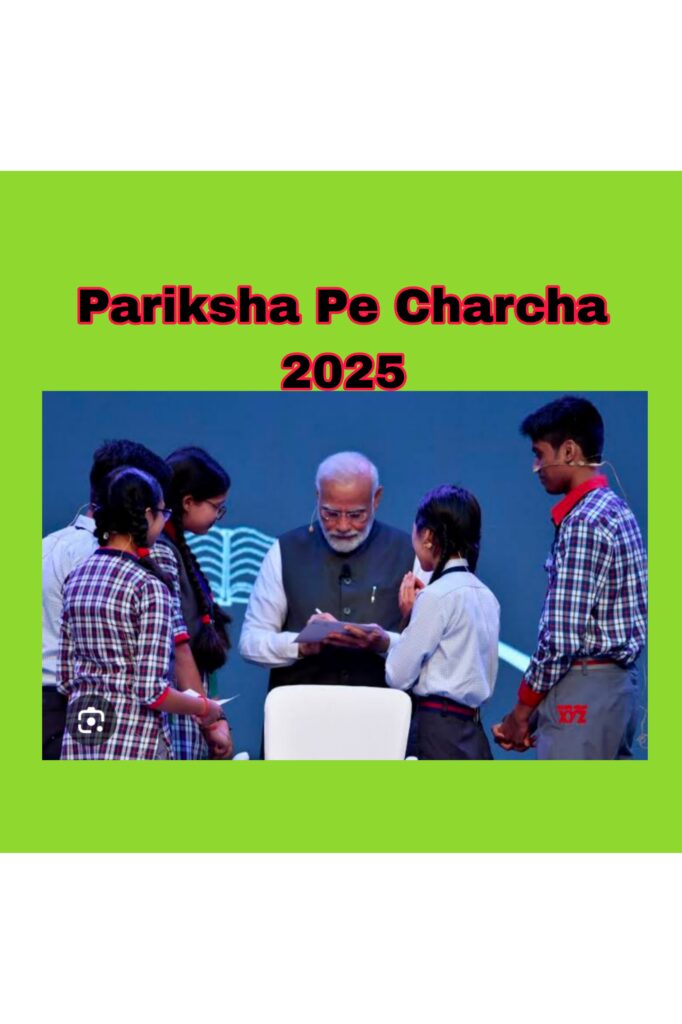On the morning of Diwali 2025, Delhi woke up not to the warmth of diyas or the joy of festivities, but to a blanket of toxic air. The Air Quality Index (AQI) hit a staggering 335, placing the city in the “very poor” category. In some areas like Anand Vihar (414) and Wazirpur (407), the situation was even worse, with AQI levels breaching into the “severe” zone. Despite regulations and warnings, the city’s air turned into a hazardous cocktail of smoke and particulate matter, raising urgent questions about how India celebrates its most beloved festival.

A Festival Overshadowed by Pollution
Diwali, traditionally a celebration of light triumphing over darkness, has increasingly become a time when the skies are filled with smoke rather than stars. This year, 36 out of 38 AQI monitoring stations in Delhi recorded levels above 300, indicating widespread deterioration in air quality. Only two stations managed to stay in the “moderate” range—a sobering statistic that underscores the scale of the crisis.
The Supreme Court had permitted only green crackers to be used during restricted hours, aiming to balance tradition with environmental responsibility. However, enforcement proved challenging. Reports from across the city indicated widespread use of conventional firecrackers, which are known to release high levels of pollutants including sulfur dioxide, nitrogen oxides, and heavy metals.
Leadership Calls for Change
Delhi’s newly elected Chief Minister, Rekha Gupta, made a heartfelt appeal to residents, urging them to celebrate Diwali in a more traditional and eco-friendly manner. “Let’s return to the roots of Diwali—lighting diyas, sharing sweets, and spending time with loved ones. Fireworks are not the essence of this festival,” she said in a public address.
Her message was clear: the joy of Diwali should not come at the cost of public health. Yet, the reality on the ground showed a disconnect between policy and practice.
Emergency Measures: GRAP Stage II Activated
In response to the alarming pollution levels, the Central Pollution Control Board (CPCB) activated Stage II of the Graded Response Action Plan (GRAP). This plan includes a series of emergency measures aimed at curbing pollution:
- Deployment of water sprinklers at key locations like India Gate to reduce particulate matter.
- Ban on diesel generators, except for essential services.
- Increased frequency of mechanized road sweeping.
- Closure of brick kilns and stone crushers in the NCR region.
These steps, while necessary, are reactive rather than preventive. Experts argue that unless the root causes—such as firecracker use and vehicular emissions—are addressed, GRAP will remain a temporary band-aid.
Cloud Seeding: A Ray of Hope?
In a bold move, the Delhi government announced its preparedness to carry out cloud seeding to induce artificial rain. This technique involves dispersing substances like silver iodide into clouds to stimulate precipitation, which can help wash away pollutants from the air.
However, this plan hinges on approval from the India Meteorological Department (IMD) and favorable weather conditions. While cloud seeding has shown promise in other parts of the world, its effectiveness in urban Indian settings remains to be seen.
The Science Behind the Smog
Delhi’s geography and climate make it particularly vulnerable to pollution spikes during winter. Cooler temperatures and low wind speeds trap pollutants close to the ground, creating a phenomenon known as temperature inversion. Add to this the emissions from firecrackers, stubble burning in neighboring states, and vehicular traffic, and you have a perfect storm for toxic air.
Particulate matter (PM2.5 and PM10) are the most dangerous components of this smog. These microscopic particles can penetrate deep into the lungs and bloodstream, causing respiratory issues, cardiovascular diseases, and even premature death.
Public Health at Risk
Doctors across Delhi reported a surge in patients complaining of breathing difficulties, eye irritation, and asthma attacks. Children and the elderly are particularly vulnerable. Schools were advised to limit outdoor activities, and many residents resorted to wearing masks even indoors.
The long-term implications are dire. Studies have linked prolonged exposure to high AQI levels with reduced lung function in children and increased risk of chronic diseases in adults.
Rekindling the Spirit of Diwali
It’s time to ask: what does Diwali truly mean? Is it the sound of firecrackers or the glow of diyas? Is it the haze of smoke or the warmth of community?
Many Delhiites chose to celebrate differently this year. Social media was flooded with images of eco-friendly decorations, plant-based rangolis, and community feasts. Some neighborhoods organized no-cracker zones, where residents pledged to keep the air clean.
These small acts of responsibility can collectively make a big difference. As one resident put it, “Lighting a diya is enough to celebrate Diwali. We don’t need to light up the sky with pollution.”
Lessons for the Future
Delhi’s Diwali pollution crisis is not just a local issue—it’s a wake-up call for urban India. As cities grow and traditions evolve, there’s an urgent need to rethink how festivals are celebrated.
Here are some steps that can help:
- Stricter enforcement of firecracker bans, with real-time monitoring and penalties.
- Public awareness campaigns highlighting the health risks of pollution.
- Promotion of alternative celebrations, such as laser shows and cultural performances.
- Investment in clean technologies, including electric vehicles and renewable energy.
- Collaboration with neighboring states to tackle stubble burning.
Conclusion: A Breath of Fresh Thought
Diwali is a celebration of light, hope, and renewal. But in Delhi, it has become a reminder of the environmental challenges we face. The toxic air that enveloped the city this year is not just a consequence of one night—it’s the result of years of neglect, misplaced priorities, and lack of accountability.
Yet, there is hope. With leadership, innovation, and public participation, Delhi can reclaim its skies. The diyas may flicker, but the spirit of change burns bright.
Let this Diwali be the turning point. Let it be the year we chose clean air over loud celebrations, health over habit, and sustainability over spectacle.


